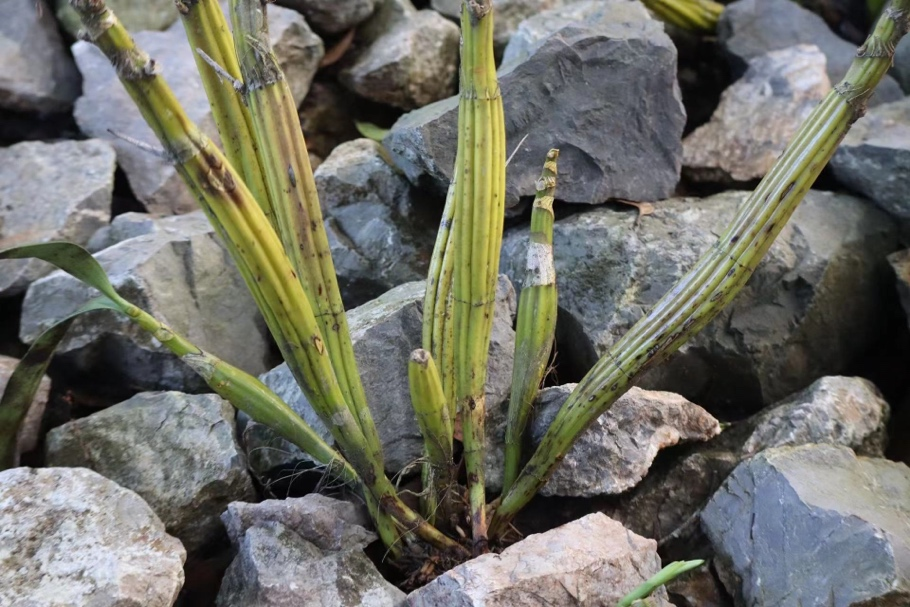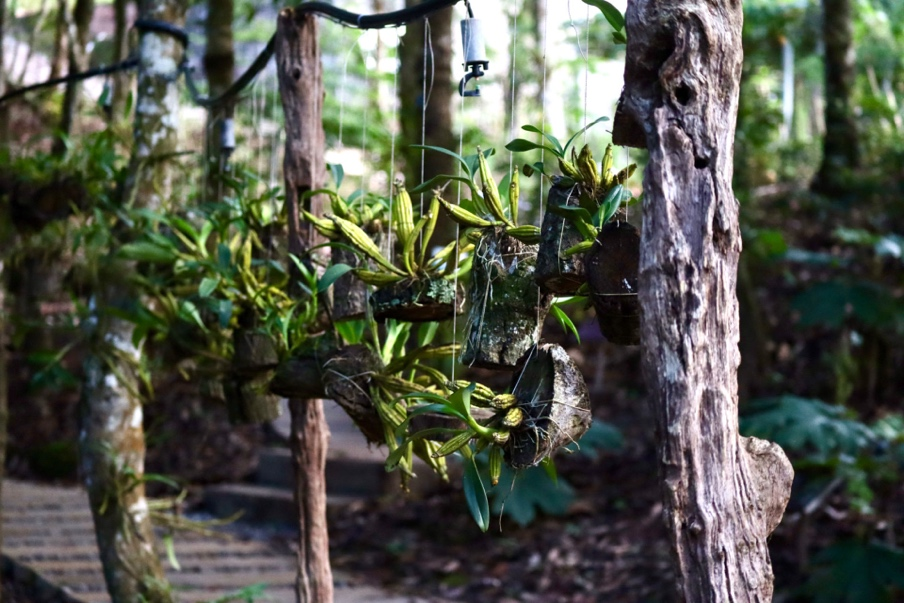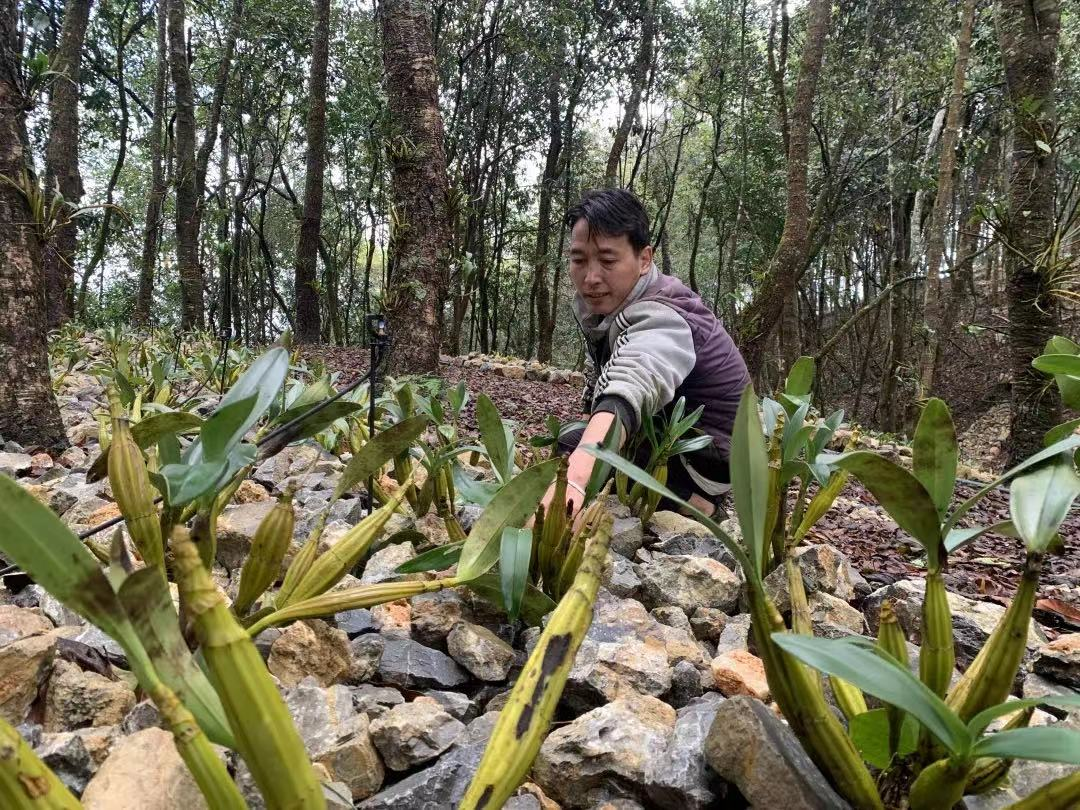15
2023.08
With roots clinging directly to mountain rocks, the dendrobiums distinguish themselves from other plants in the picturesque landscape of Songmao Valley in Pu'er, Yunnan province.
Dendrobium is a medicinal plant widely used in herbal medicine for stomach nourishment and throat inflammation treatment, and also a special ingredient for health-focused drinks and meals.
"We have developed 1000 mu (approximately 66.7 hectares) of dendrobiums from scratch," said Zhou Zhengfeng, the chief manager of the Songmao Valley.

Dendrobium with roots clinging to rocks (photo by Liu Zhaoxi)
As one of the most biodiverse regions globally, Pu'er boasts 16 natural reserves that protect nearly one-third of species in China, including 3,665 varieties of traditional Chinese medicinal (TCM) herbs.
Located not far from the city center, Songmao Valley covers an area of 5,000 mu (approximately 333 hectares), benefiting from abundant natural resources for cultivating medicinal herbs and ensuring their quality from the source. Currently, the valley cultivates 17 varieties of medicinal plants, including Pyrola, Ganoderma lucidum, and so on.
While challenge lies on the long growth cycle of traditional Chinese medicine, spanning three to five years, which extends the profitability period of the valley, resulting in continuous losses for a certain period.
Thanks to their perseverance and strong policy support from local government, the valley managed to address the challenge and transformed itself from an undeveloped forest into a comprehensive industrial chain. It integrates growing, development, processing, and sales for rare medicinal herbs.

Songmao Valley with a variety of herbs (photo by Liu Zhaoxi)
Due to the reason that the cultivation of these herbs cannot be mechanized, the labor-intensive industry demands a significant number of manual laborers throughout the entire process, from early planting to mid-term management and harvesting.
This has provided employment opportunities and effectively stimulated the local economy's development.
With an annual total revenue reaching a nine-digit figure, it has also become a symbol of Pu’er and has expanded into various derivative branches, including tourism and health industries, with investment from the local government.
The advancement of Songmao Valley is not an isolated case.
In recent years, Pu'er has fully leveraged its rich biodiversity and forestry resources to strengthen and expand the medicinal herb industry, benefiting many pharmaceutical practitioners.
A complete industrial chain has been established in the biopharmaceutical field, with products ranging from herbal extracts and chemical generics to health products and medical equipment.

Workers in the valley (Photo from the multi-media center of Simao District of Pu’er)
This robust and integrated system effectively connects to China’s rural revitalization drive, allowing Pu'er to transform its resource advantage into tangible economic benefits for local people.
"We offer payment of around 150-200 yuan per day to our workers in the valley, the majority of whom are ethnic minority villagers nearby,” said Zhou. “They could engage in tasks like land clearing, herb harvesting and processing.”
Now, medicine herbs produced in Songmao Valley are delivered to the shelves of TCM pharmacies across the country.
“It is very likely a consumer in Beijing could pick up his medicine with the origin of Pu’er,”added Zhou, with a sense of pride.
文字|刘兆希
排版|王子露

2025.12.16 15:15
16
2025.12
16
2025.12
16
2025.12
 28:32
28:32
2025.06.19 08:55